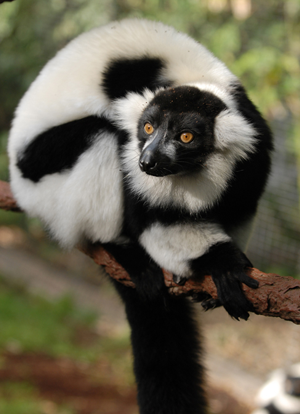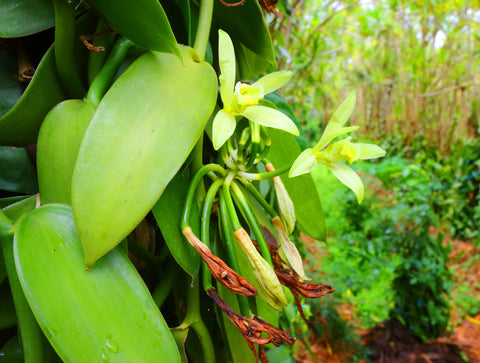Madagascar Unfiltered: A Marine Biologist's Dive into Paradise (and a Plea for Its Future)

Stepping off that Air Madagascar flight in Antananarivo was like walking into a completely different dimension. For hours, I'd been breathing that recycled, vaguely antiseptic air on the flight from Paris, dreaming of the vibrant, untamed world that awaited me. But nothing could have prepared me for the sheer assault on my senses. The humidity hit me like a wall – a thick, botanical greenhouse kind of warmth laced with the scent of damp earth and the ever-present exhaust fumes of the city. Honking taxis blared in competition with distant music, creating a cacophony that was both chaotic and utterly captivating. Madagascar. I was finally here.
For two weeks, I traded my lab coat for hiking boots and my dive gear for a camera, exploring the incredible biodiversity of this island nation. My journey took me from the rainforests of Andasibe-Mantadia National Park to the idyllic beaches of Nosy Be. I’m Kai Ito, by the way – marine biologist, freediving enthusiast, and a total sucker for anything related to conservation. So, grab a THB (Three Horses Beer – ice-cold, of course!), and let me tell you about my adventure.
Encountering the Ghosts of the Rainforest: Lemurs of Andasibe
Andasibe-Mantadia is like stepping into a prehistoric world. The air is thick, the vegetation dense, and the sounds… otherworldly. But nothing, absolutely nothing, prepared me for the dawn chorus of the Indri lemurs.
Their haunting, mournful calls echoed through the rainforest like a chorus of ethereal sirens. It was both beautiful and heartbreaking, a reminder of the fragility of this ecosystem. These majestic creatures, with their distinct black and white markings that resemble tiny masked bandits, are truly special. Witnessing them in their natural habitat was an unforgettable experience.
And then there were the Sifakas. Watching them move across the forest floor was like watching ballet dancers in a green theater. Their unique leaping locomotion is mesmerizing – they seem to effortlessly bound from one point to another, their long tails providing balance. It's a testament to their adaptation to this unique environment.
But perhaps the most unusual encounter was with the nocturnal Aye-aye. This critter is… well, let's just say it's not winning any beauty contests. With its large, luminous eyes, its perpetually surprised expression, and its elongated middle finger used for tapping on trees to locate insect larvae, it's definitely an unsettling sight. But it's also a testament to the incredible diversity of life in Madagascar.
Chameleons: Masters of Disguise
Madagascar is a chameleon paradise, and I was determined to spot as many as possible. Near Andasibe, I had the incredible luck of finding a Panther chameleon. This wasn't just any chameleon; it was a male Ambilobe morph, exhibiting intense reds, oranges, and blues. The colors were almost unreal, like something out of a science fiction movie. Watching it move slowly and deliberately, its eye turrets moving independently, was mesmerizing. It’s like they exist on a different timescale than we do.
The contrast couldn't have been greater when, near Mont Passot on Nosy Be, I encountered a minute Brookesia chameleon. This tiny reptile was no bigger than my thumbnail! Its ability to blend seamlessly with the leaf litter was astounding. It literally looked like a tiny, animated twig. I could easily have missed it if I hadn't been paying close attention.
A Taste of Madagascar: From Romazava to Rum
No trip is complete without indulging in the local cuisine, and Madagascar certainly didn't disappoint. My culinary journey started at Vakôna Forest Lodge near Andasibe with a steaming bowl of Romazava. This traditional stew is made with tender zebu meat and a variety of local herbs, including brèdes mafana, anamalaho, and anantsonga. The flavor was earthy and slightly bitter, a unique taste that I quickly grew to love.
Between Antananarivo and Andasibe, I couldn't resist trying Koba akondro from a roadside vendor. This dense, sticky treat is made with mashed bananas and peanuts, wrapped in banana leaves and then steamed. The flavor was intensely sweet, with a smoky undertone from the banana leaf. It was the perfect fuel for a long day of exploring.

On Nosy Be, I treated myself to grilled lobster at Chez Nono, a beachside restaurant in Ambatoloaka. The lobster was cooked to perfection, with a smoky char and incredibly sweet meat. The sound of the waves crashing nearby added to the perfect atmosphere. And of course, no meal in Madagascar is complete without a bottle of ice-cold THB. I also sampled Dzama, the local rum – truly the ambrosia of Madagascar, which I enjoyed responsibly under the shade of an umbrella.
Adventures in the Wild: Trekking, Freediving, and Vanilla
My days in Madagascar were packed with adventure. One evening, I joined a guided rainforest trek in Andasibe with a local guide named Jean-Baptiste. As dusk settled, the rainforest came alive with a symphony of sounds: the chirping of insects, the rustling of leaves, and the distant calls of nocturnal lemurs. Navigating the muddy, uneven terrain in the fading light was a challenge, but the experience was worth it. My headlamp illuminated the path, revealing hidden wonders at every turn.
Of course, as a freediving enthusiast, I couldn't resist exploring the underwater world of Nosy Be. Nosy Tanikely Marine Reserve is a true gem. The coral formations were incredible – brain coral, staghorn coral, and so much more. I saw clownfish peeking out from their anemones, parrotfish grazing on algae, and green sea turtles gliding effortlessly through the water. Descending, holding my breath, the feeling of weightlessness and the serenity of the underwater world always gets me. I was using my Cressi Gara Modular fins for efficient propulsion, allowing me to stay down longer and explore further.
Another highlight was visiting a vanilla plantation near Ambanja. I learned about the entire process of cultivating vanilla, from the hand-pollination of the orchids to the curing of the beans in the sun. The aroma of the beans was overwhelming, a sweet, intoxicating fragrance that lingered in the air. Our guide explained that the high cost is due to the long and intensive process involved in producing high-quality vanilla.
Contrasting Landscapes: Rainforests, Beaches, and Rice Paddies
The landscape of Madagascar is incredibly diverse. In Andasibe, I was surrounded by lush, humid rainforest, with its towering trees draped in vines. The filtered sunlight created dappled patterns on the forest floor, and the air was thick with humidity. It felt like stepping back in time.
On Nosy Be, the landscape shifted dramatically to volcanic beaches with black sand and turquoise waters. Palm trees swayed in the breeze, and the sunsets painted the sky in vibrant colors. It was a tropical paradise.
Even from the airplane, the landscape was captivating. The patchwork of rice paddies visible from the air created a stunning mosaic of greens and browns. The terraced structure reflected the sunlight like a giant mirror.
A Call to Action: Conservation in Action
One of the most impactful experiences of my trip was visiting a local community conservation project near Andasibe focused on reforestation. I helped plant native tree species, including Ravenala madagascariensis to support the endemic Strelitzia bird, baobab saplings to combat erosion, and ebony trees to help restore habitat.
It was inspiring to see the dedication and passion of the local community in protecting their environment. The challenges of combating deforestation are immense, but the importance of community involvement cannot be overstated. These saplings represent hope – the hope that one day, they will become a thriving forest, providing habitat for countless species.
Resting My Head: Ethical Accommodation
Throughout my trip, I made a conscious effort to support eco-friendly and sustainable accommodation options. Near Andasibe, I stayed at Vakôna Forest Lodge, which is beautifully integrated with the surrounding rainforest. The sound of lemurs calling at dawn was my alarm clock. I was also impressed by their ethical approach to interacting with the resident lemurs – observing them from a distance, avoiding feeding them, and respecting their space.
On Nosy Be, I enjoyed a stay at a bungalow at Vanila Hotel & Spa. I loved the ocean views from my private balcony and the use of local materials (raffia, wood) in its construction. The sound of the waves lulled me to sleep each night.
Through the Lens: Capturing Madagascar's Beauty
As a marine biologist and conservationist, I believe in the power of visual storytelling. I used a Sony a6000 with a 70-200mm lens for capturing wildlife portraits and a GoPro for underwater shots and wider scenes. I spent hours waiting for the perfect light, the perfect moment, to capture the unique beauty of Madagascar.
I was particularly drawn to the golden hour light on the beaches of Nosy Be, creating long shadows and illuminating the sand with a warm glow. You can see some of my favorite shots on my Instagram: @KaiItoAdventures – Marine biologist & freediver exploring the world's oceans and rainforests. Documenting conservation efforts & sharing the beauty of our planet, one breath at a time. Always searching for the perfect bubble ring.
Final Thoughts: A Plea for Madagascar's Future
My trip to Madagascar was an incredible experience, one that I will cherish forever. But it also left me with a sense of urgency. Madagascar's unique ecosystems are incredibly vulnerable, facing threats from deforestation, habitat loss, and climate change.
Responsible tourism can play a crucial role in mitigating these impacts. By supporting eco-friendly businesses, respecting local cultures, and contributing to conservation efforts, we can help protect this incredible island for future generations.
I urge you to support organizations like the Madagascar Biodiversity Partnership (https://madagascarpartnership.org/) - you can find them on social media too. They are doing incredible work to protect Madagascar's biodiversity through research, education, and community engagement. I'm also planning to donate 20% of my photography print sales from this trip to the organization, and I encourage you to do the same.
I left Madagascar with a renewed sense of hope and a firm belief that collective action can make a difference. Let's work together to protect this precious corner of our planet.